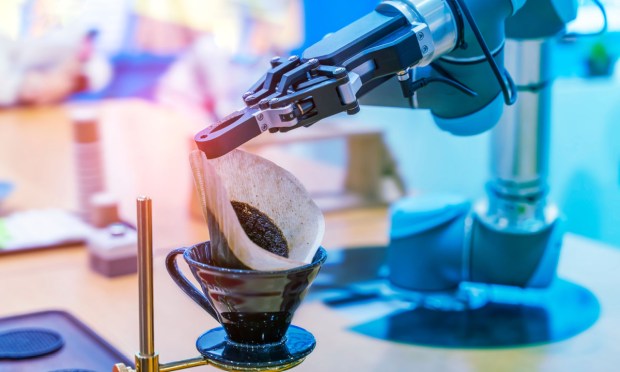
Throughout 2023, more restaurants turned to kitchen automation to drive back-of-house efficiency, even as consumers have resisted the increasing automation of the industry.
In October, Chipotle announced that it was working with automated food service platform Hyphen to test a “cobotic” (short for “cooperative robotics”) “digital makeline.”
In June, fast-casual chain Sweetgreen said it expects all its locations to be automated within the next five years.
Meanwhile, Chipotle founder and former CEO Steve Ells has been developing his automation-powered concept Kernel, which is meant to leverage robotics to operate small-footprint locations with only three human employees.
Smaller brands, too, are joining the mix. For instance, restaurant automation company Miso Robotics, in partnership with retail technology company Cali Group and biometric identity verification platform PopID, announced earlier this month that it is opening an automated burger restaurant in Pasadena, California.
Plus, per reports over the summer, Mamma Ramona’s, a pizzeria and Italian food restaurant in Ramona, California, has boosted its pizza-making efficiency by combining a Picnic pizza preparation robot with a Cuppone dough press that automates dough-stretching and a TurboChef rapid-cook oven, working toward making more than 100 pizzas an hour.
In an interview with PYMNTS last month, Yegór Traiman, CEO of autonomous restaurant technology company Remy Robotics, which recently launched its Better Days fast-fine virtual brand in the U.S., noted that the largest challenge ahead comes down to driving consumer adoption and loyalty.
“At the end of the day in the food industry, it’s not about the technology itself. It’s all about the food and customer preferences. And we can build whatever innovative, efficient and cool technology, but it needs to be proved by the demand and by the sale volume,” Traiman said.
In fact, consumers are not sold on restaurant automation. The PYMNTS Intelligence exclusive report “Connected Dining: The Robot Will Take Your Order Now,” which drew from a survey of nearly 2,000 U.S. consumers, reveals that only 33% of men and just half that share of women said they would be interested in visiting a restaurant that uses robotics. Top among consumers’ concerns are the quality and accuracy of the food as well as the job displacement for human workers.
Moreover, a PYMNTS Intelligence survey of more than 2,200 U.S. consumers last year revealed that only 37% agree that more technology inside of restaurants means better customer service.
Indeed, situations where the automation of the experience has been too visible to consumers — take, for instance, Brinker International’s test of robotic servers last year — have not always panned out.
Still, it seems like there are cases where consumers are open to the experience, such as occasions when the technology would replace, say, a vending machine for a quick grab-and-go option.
In an interview with PYMNTS earlier this year, Geoff Henry, then president of Jamba, discussed the progress of the restaurant’s automated smoothie shops partnership with Blendid, highlighting positive responses from consumers who have tried it, especially among younger consumers who are more open to testing new technologies.
“The repeat rate has been very high,” Henry said at the time. “We’re obviously tracking those who purchase and then come back and purchase again [and] benchmarking that relative to what we would expect versus industry standards, and we’ve been pleased.”